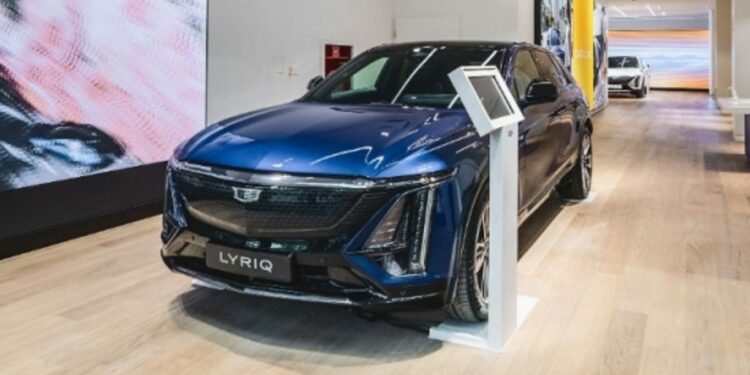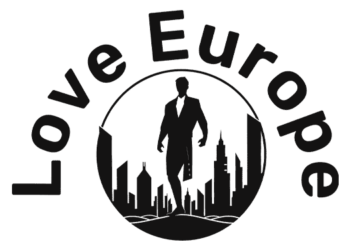More: GM wants to reenter Europe as an EV player. Here’s what it’ll take to succeed
In December 2023, GM expanded to selling the Lyriq in the Swedish market and the following spring continued its expansion with the opening of a Paris store. In late September, GM announced the addition of the Frankfurt and Hamburg stores and the expansion of its European service network to 26 locations across Germany, Switzerland, France and Sweden.
In the third quarter, GM reportedly sold 1,000 vehicles in Europe, according to financial filings. Year to date, the automaker has sold 2,000. But GM doesn’t have plans to establish a manufacturing facility in Europe, GM Europe spokesperson Chaiti Sen told The Detroit News.
“The only way you’re going to have serious volume in Western Europe is to build in Western Europe, period,” said Warren Browne, an auto supplier consultant and former GM executive in Detroit and Europe who worked at the carmaker for 40 years. “You have to build there. Otherwise, you’re just considered a niche player. And unless you’re in every market, you’re really a niche player.”
Sen added GM’s direct-to-consumer model in Europe is “key to staying closely connected with our European customers and immersing them in the Cadillac brand experience. By managing our sales channels directly, we’re able to gather valuable insights and adapt quickly to meet customer needs. This approach not only builds strong, lasting relationships but also provides a personalized experience tailored to local preferences — a cornerstone of Cadillac’s long-term success in Europe.”
GM hasn’t said if it plans to sell Chevrolet, GMC or Buick EVs in Europe at some point.
“When it comes to Europeans — design, performance and technology are incredibly important, and Cadillac is our flagship brand that combines all these aspects artfully into all its vehicles,” Sen said.
Part of the reason that GM left Europe is the difficulty of affordably maintaining regulatory compliance there and in the United States at the same time, noted Stephanie Brinley, principal automotive analyst at S&P Global Inc.: “It just became too expensive to support both. With an EV, you don’t have that issue.”
If GM can get back to Europe with EVs and sell more, “it’s a good move,” Brinley said. “If they manage it carefully.”
The state of the market
Auto demand in Europe has been tempered by a weaker economy. Last week, the European statistical agency reported the euro zone grew 0.4% in the third quarter compared with the previous quarter, keeping Europe’s growth behind the United States. The U.S. economy grew at an annual rate of 2.8% in the third quarter on the back of increased consumer spending, the U.S. Department of Commerce reported last week.
Demand in Germany, Europe’s largest auto market, has slowed with rising prices, especially with increased energy costs caused by Russia’s war with Ukraine. Germany’s economy dodged a recession when the economy grew 0.2% in the third quarter after contracting in the previous quarter.
“This is still far from what we need, but at least it is a ray of hope,” Economy Minister Robert Habeck said, Reuters reported. “The economy is proving more robust than previously forecast, and the technical recession expected by many has failed to materialize.”
New EU vehicle registrations continued a downward trajectory in September when they declined 6% year over year, according to the European Automobile Manufacturers’ Association (ACEA). The market saw negative results in all three of the region’s four major markets: France was down 11.1%, Italy 10.7% and Germany 7%. Spain rebounded with a 6.3% increase.
While EV registrations increased 9.8% in September, year-to-date market volume was 5.8% lower than the same period last year, according to the ACEA. EV total market share fell to 13.1% from 14%, with a substantial decrease in Germany of 28.6%. Europe’s EV sales have declined with the ending of some EV subsidy programs, specifically in Germany. The government announced the end of the program in December 2023 as a way to trim the budget.
Europe “is in a very bad position,” Dudenhöffer said. “Germany as a whole has a big problem, so the performance of Germany is very bad. We have no strategy. We do just actions and actions and actions of our government, and it makes no sense.”
In September, automakers in Europe called for “urgent action” by the government with EV sales declining even though the EU still has stringent emissions standards coming.
“The zero-emission transition is highly challenging, with concerns about meeting the 2025 CO2 emission reduction targets for cars and vans on the rise,” the ACEA board wrote. “The current rules do not account for the profound shift in the geopolitical and economic climate over the past years, and the law’s inherent inability to adjust for real-world developments further erodes the competitiveness of the sector.”
To handle the concerns with lower-cost Chinese competitors, the European Union last week finalized tariffs on imported Chinese battery electric vehicles. The tariffs differ by company, including a 17% duty for BYD products, 18.8% for Geely and 35.3% for state-owned SAIC.
A recent report by McKinsey & Company noted that year-over-year EV sales in Europe increased an average of more than 50% from 2020 to 2023, and even with recent declines, “the region’s long-term prospects for electrification remain strong.”
Still, “whether Europe can replicate its expertise with ICE vehicles in a fully BEV future is uncertain, but if it is unable to seize this opportunity, its auto industry could be headed for long-term disruption if current trends accelerate,” the report states, highlighting the importance for European industry leaders to fulfill the promises made to support the transition and prevent economic losses that would be seen if new entrants “continue to capitalize on their competitive advantages and challenge European OEMs on multiple fronts.”
From GM’s perspective, “the move to EVs is undeniable,” Sen said, given the “strong government commitments across Europe to reduce emissions.”
“Many European markets are advancing their electrification journeys, and our all-electric strategy aligns with these shifts, supported by record global investments in EV technology,” she said. “Our focus on design, technology and battery range meets the top priorities of premium EV customers, making EV adoption more attractive.”
@bykaleahall
Source link : http://www.bing.com/news/apiclick.aspx?ref=FexRss&aid=&tid=67284effe18348409a1df75ae35252d1&url=https%3A%2F%2Fwww.detroitnews.com%2Fstory%2Fbusiness%2Fautos%2Fgeneral-motors%2F2024%2F11%2F03%2Fgm-pushing-forward-with-new-europe-ev-business-despite-market-chaos%2F75945801007%2F&c=7588830911932312549&mkt=en-us
Author :
Publish date : 2024-11-03 20:00:00
Copyright for syndicated content belongs to the linked Source.



